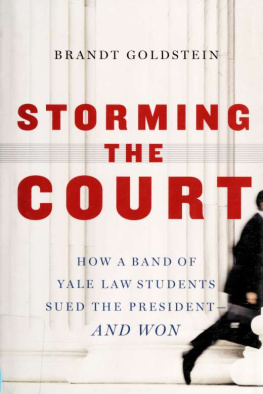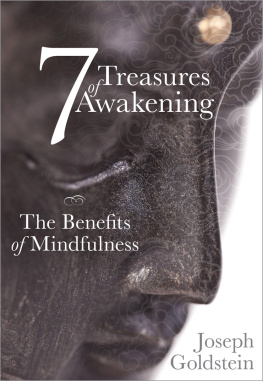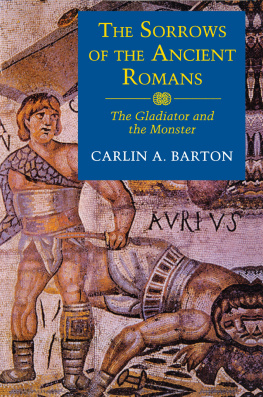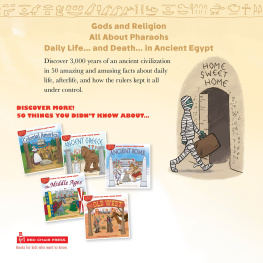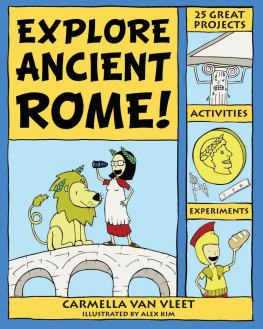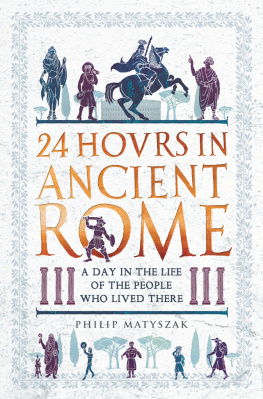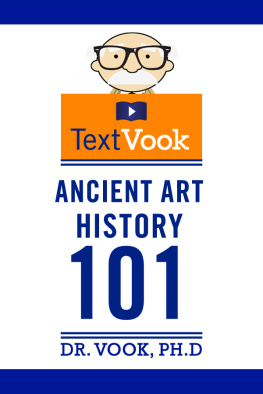Title Page
101 AMAZING FACTS ABOUT ANCIENT EGYPT
Jack Goldstein
Publisher Information
Published in 2014 by
Andrews UK Limited
www.andrewsuk.com
The right of Jack Goldstein to be identified as the author of this work has been asserted by him in accordance with the Copyright, Designs and Patents Act 1998
Copyright 2014 Jack Goldstein
All rights reserved. No part of this publication may be reproduced, stored in a retrieval system, or transmitted, in any form or by any means without the prior written permission of the publisher, nor be otherwise circulated in any form of binding or cover other than that in which it is published and without a similar condition being imposed on the subsequent purchaser. Any person who does so may be liable to criminal prosecution and civil claims for damages.
All facts contained within this book have been researched from reputable sources. If any information is found to be false, please contact the publishers, who will be happy to make corrections for future editions.
Introduction
Do you know who the ancient Egyptian god of the underworld is? What type of mask would an embalmer wear whilst carrying out the mummification process on a body? Who was the most successful of all the pharaohs? All these questions and more are answered in this fascinating easy-to-read guide to ancient Egypt. Whether you are studying the subject and need access to the important information fast, or you are just interested in this fascinating period of history, this excellent quick-read guide containing over one hundred facts is a perfect addition to your bookshelf.
Follow Jack Goldstein on Twitter @GoldsteinBooks
Visit Goldstein Books at www.jackgoldsteinbooks.com
General Facts
- Hieroglyphs, an early form of writing, were invented by the Egyptians in around 3000 BC. It is thought that they were first used as wall paintings with meaning, later going on to become more complex and descriptive - in fact there are more than seven hundred different hieroglyphs!
- Hieroglyphs were in fact only used for official inscriptions and ritual purposes. For everyday use, a script called hieratic was used.
- The word hieroglyph is Greek; it comes from the words hieros (sacred) and glyphe (carving). It was so called because the Greeks found the writings on the walls of temples.
- The last known hieroglyphic inscription is in the Temple of Isis in Philae, and was inscribed in 394 AD.
- More than one thousands gods were worshipped by the ancient Egyptians - although the most important of all of them was Ra, the sun god.
- The ancient Egyptians were the first people whose calendar was divided into 365 days spread over twelve months - although they also had two additional calendars; a lunar one which told priests when to perform ceremonies for the moon god Khonsu, and an astronomical one (based on observing the star Sirius) which let them know when the flood season was approaching.
- The Egyptians invented clocks - the very first time-telling devices were tall obelisks, whose moving shadows acted as a kind of sundial.
- The people of ancient Egypt believed that the earth (which they called Geb) and the sky (Nut) was destroyed and then re-created by Ra on a daily basis.
- Egyptians believed that the world was flat and round, with the river Nile flowing through its middle.
- Ancient Egyptians were the first people to use gold for trade (although other civilizations had previously used it for jewellery and decoration).
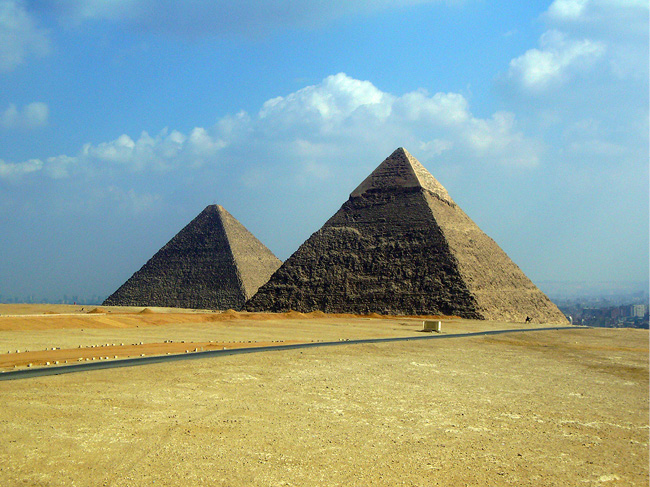
Pyramids
- Egyptian pyramids are probably the best-known pyramid structures, although other ancient races (such as the Mayans) and even more recent ones (the Aztecs) built them. In Egypt, most were built as tombs for pharaohs and their families.
- It is thought that the shape of pyramids was inspired by the spreading rays of the sun.
- We have discovered more than 130 pyramids throughout Egypt, however the vast majority have been targeted by tomb robbers over the last 3,000 years and their goods have been plundered.
- The Great Pyramid at Giza is perhaps the best known of all of the pyramids. It took twenty years to build, and was constructed for king Khufu who lived between 2589 and 2566 BC.
- It is made from an amazing two million blocks of limestone, and stands almost 150 metres high - thats taller even than the statue of Liberty! For 3800 years after its construction it was the tallest man-made structure in the world.
- It has vents pointing up towards the constellation of Orion; these were put there so the occupants spirit could fly straight up to the gods.
- The earliest pharaohs would be buried with their servants, who would of course not necessarily die of natural causes at the same time... later tombs contain model servants (called shabti ) instead.
- The very first Egyptian pyramid was built in 2600BC by architect Imhotep for the pharaoh Djoser. It was a step pyramid and was originally surrounded by a wall ten metres high which had fifteen doors in it - although only one of them opened!
- Some ancient Egyptian tombs even contained toilets!
- Pyramid builders were in fact not slaves, but skilled craftsmen in the permanent employment of the pharaohs. We have even found graffiti which shows they took pride in their work, and were organised into teams with names such as Friends of Khufu and Drunkards of Menkaure!
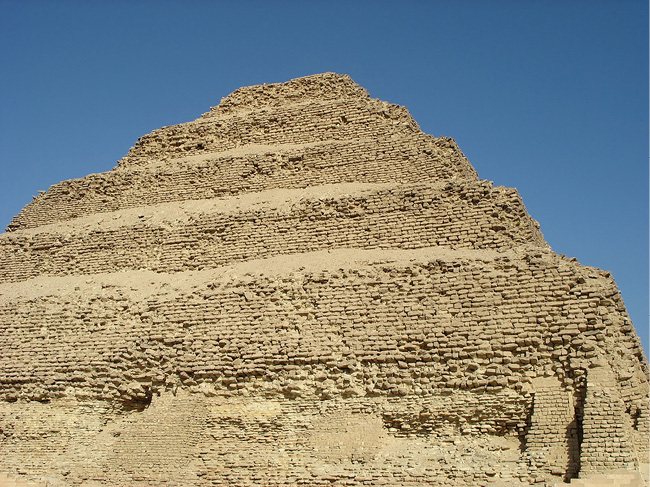
A Step Pyramid
Did You Know?
- In ancient Egypt, It was fashionable to hold a fly swatter made from a giraffes tail!
- Both men and women wore eye make-up, which they believed could fight eye infections and help restore poor eyesight. It was made from ground-up powders mixed with oil and was called kohl .
- The scarab beetle was sacred to the Egyptians, representing life after death.
- Both sexes also shaved their heads and wore wigs; this was to stop them getting lice. Whereas rich people would wear wigs made from real human hair, poorer people would make their own from wool or vegetable fibre!
- Ancient Egypt was not called Egypt! Throughout the period it had a number of different names, including Kemet (meaning Black Land, a reference to the colour of the rich soil in the Nile Valley), Deshret (Red Land, referring to the areas vast deserts), and later in its history Hwt-ka-Ptah (House of the Ka of Ptah, referring to the god Ptah). It wasnt until the time of the ancient Greeks that the name was changed to Aegyptus .
- A pharaoh would never let his hair (or shaved head) be seen. He would always wear a headdress called a nemes - you can see this striped headdress on Tutankhamens golden death mask.
- Doctors of the period were the first people to sew wounds shut. They would keep their surgical needles in cases made from hollowed-out bird bones.
- Some scholars believe that the ancient Egyptian ankh symbol later evolved to the Christian cross. To the ancient Egyptians, the ankh was the key to eternal life.
- The giant Sphinx which guards the three pyramids of Giza is believed to represent the pharaoh Khafre, son of Khufu. In 1378 an Islamic cleric called Saiim al-dahr was hanged for vandalism after he damaged it - although we do not know for sure if it was during this incident that the monument lost its nose.
- The Great Pyramid of Giza is so well constructed that the four sides of the base are equal to an accuracy of just fifteen millimetres, an absolutely astounding feat of engineering.
Next page

